
Find out how much a soil test costs and what you get for your money with our expert guide. Know what to budget for different types of soil tests.
Learn how to clean and store your planters so they survive the winter.


As the weather gets cooler and the plants in your outdoor containers are dying back, it’s time to think about storing flowerpots for the winter. Proper care of your outdoor containers helps ensure they last a long time, continue to look beautiful, and don’t overwinter disease and pest problems. Proper care depends on the type of planter whether you plant flowers in large planters or smaller ones. Dig into this information on how to clean and store various planters.
Consider the planter when determining how to store (or not store) it for the winter.
Plastic planters

There are many grades of plastic pots available now, from the flimsy nursery pots to designer pots that can stand the test of time. The cost of the plastic pot should be an indicator of the quality, with less expensive pots being prone to cracking or fading in just a few seasons. More expensive pots are created to last much longer and perform better in the winter months.
When you purchase high-end plastic containers, which can also be identified as resin or fiberglass, look for included information on the features and required care for the individual pots. Some can be sturdier than any other outdoor material and are perfect for overwintering.
Self-watering pots
Many pots now come with a self-watering reservoir that allows the plant pot itself to store water in the heat of the summer months. In the cooler winter months, this can be fatal for plants and the pot itself if the reservoir doesn’t drain properly and freezes over winter.
Concrete and metal plant pots
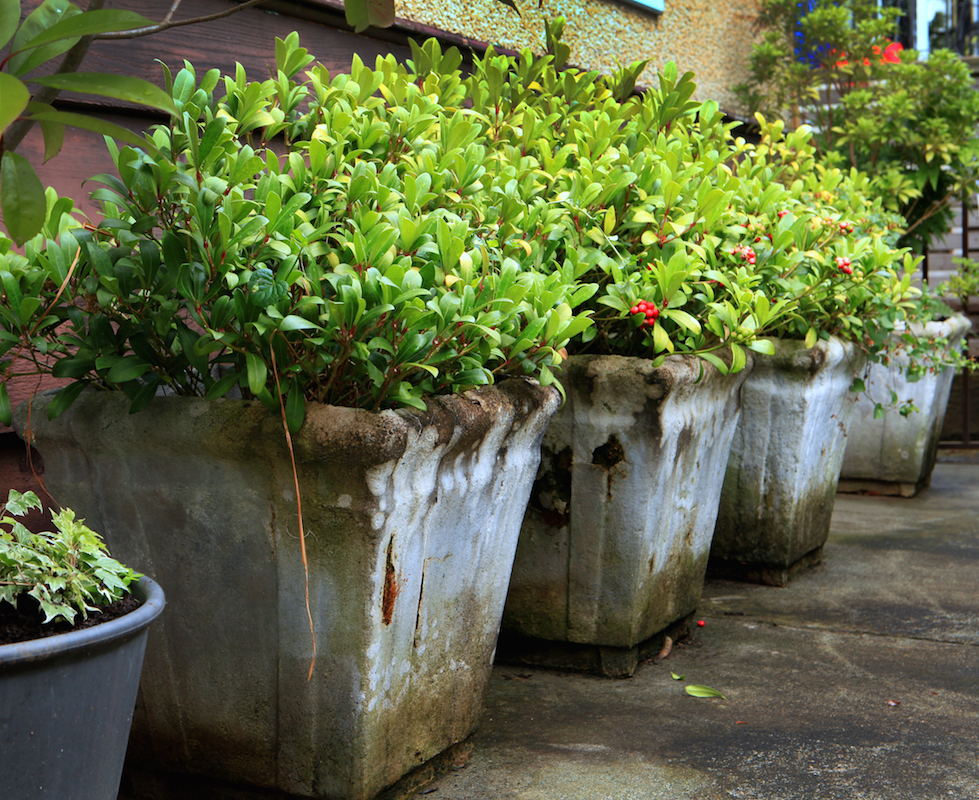
Metal will rust or discolor over time, but is generally stable in the garden with temperature changes.
Wood planters

Softer wood, like pine, will not fare as well over winter and will break down more quickly. If you have decorative planters made from softer wood, it’s best to move them in for the winter.
Terracotta pots
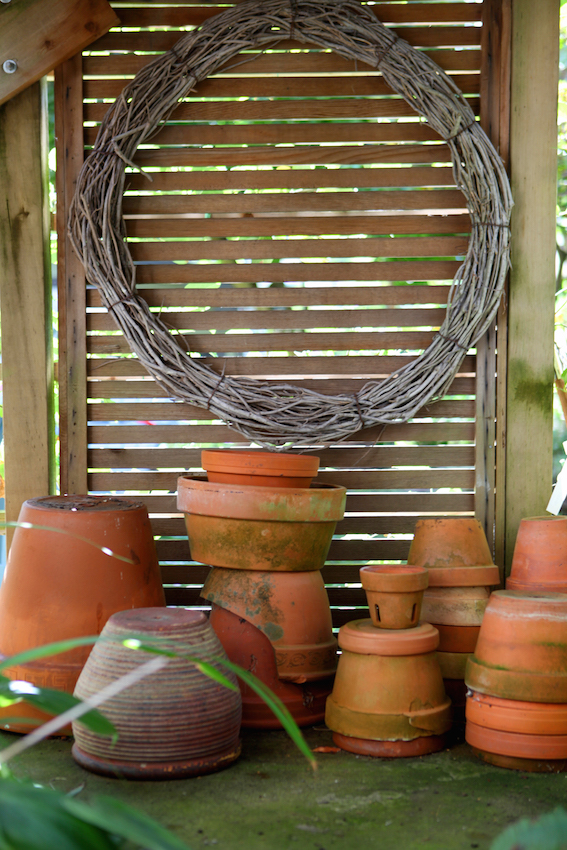
While beautiful in the garden, terracotta is not winter-hardy. The porous clay absorbs moisture, and if it freezes, it will crumble when it thaws.
Ceramic pots
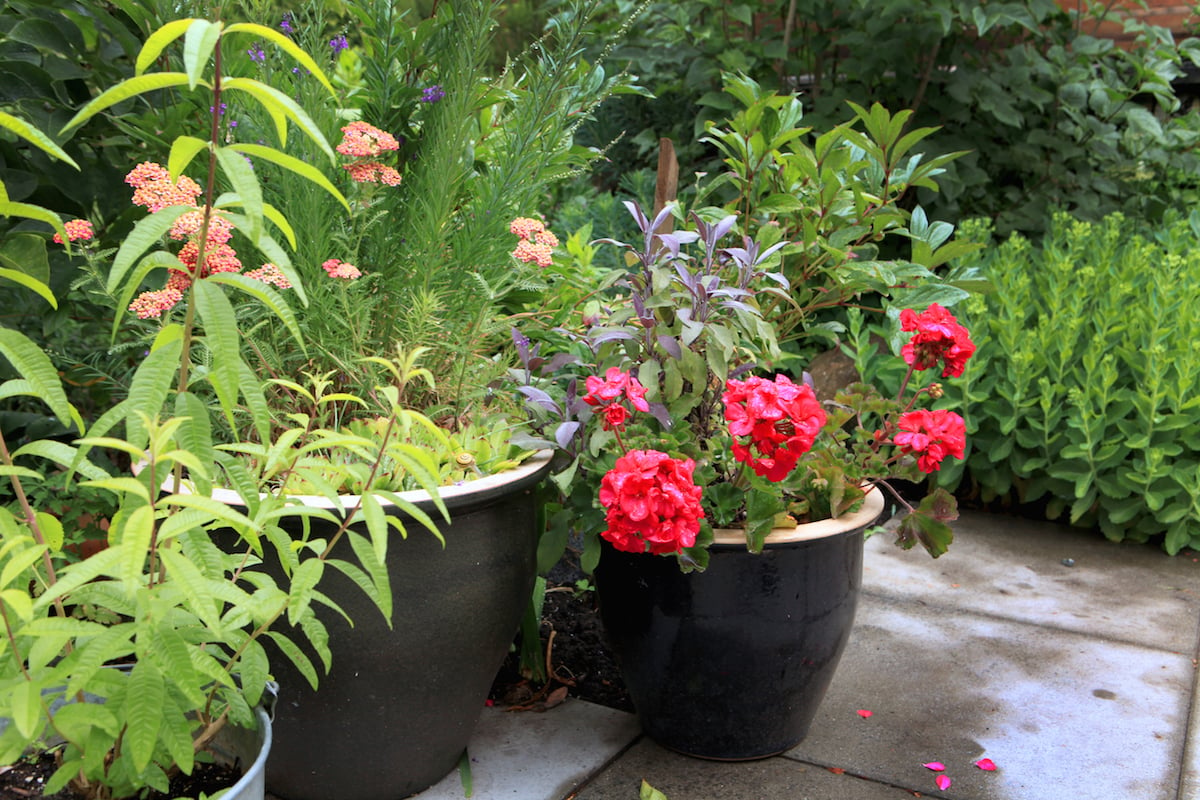
Ceramic pots that are glazed can have a longer life outdoors and a better chance of surviving through the winter. Ceramic pots with a thick glaze around the lip of the pot are usually suitable for overwintering.
Check the product information for instructions on outdoor use. Or to be safe, put the flowerpot away for winter.
When you have determined if your container can be left in place or needs special care for the winter, you can then begin your fall cleanup.
Empty delicate flowerpots and self-watering pots before moving them to a garage, shed, or covered outdoor space. Remove any excess soil with a stiff-bristled brush.
Gently power wash concrete and wood planters. Test a small area of the planter first to ensure that the power washing setting is not so high that it will damage the finish.
Terracotta pots look lovely as they weather and moss grows on them. Using a bristle brush to clean them will remove most of the soil but keep the natural patina.
Plastic pots, pots that have had vegetable crops growing in them, or pots where the plants had a disease or pest problems should be washed with soap and water before storing to prevent disease and pests from overwintering. Brush the soil off of the pots first, and then hose them down or power wash the pots. Add biodegradable dish soap to a bucket of warm water, and use a sponge to wash the pots. Rinse with the hose and let dry completely before storing.
Break any pots in the process? Instead of throwing broken pots away, keep them to make a broken pot miniature garden or use as a decorative element in the flowerbeds. Pieces of broken ceramic pots also make good drainage for outdoor containers.
Once your pots are cleaned or prepped for winter storage, the next step is to find the right spot to store them. If you have a garage or garden shed with room to store flowerpots, then this is the ideal location. You can also use a protected area of the yard, such as a covered carport, under the deck, or even under the eaves of the house. In absence of a roof, you can cover pots with a piece of plywood and drape a tarp over them for weather protection.
Stack your pots upside down so that water doesn't pool in them, even if they have drainage holes. Stacked pots can look decorative in a covered spot in the garden, especially if you add other outdoor decor.
Most pots can be stacked without issue and can be separated by gently tapping the side of the pot to release them. Decorative glazed ceramic pots and more ornate plastic pots should not be stacked, to ensure the finish isn’t damaged.
With these tips, you should have beautiful flowerpots ready to plant as soon as the spring thaw begins next year.
Do you have any tips for preparing your planters for the winter? If so, share them in the comments section below.
From average costs to expert advice, get all the answers you need to get your job done.

Find out how much a soil test costs and what you get for your money with our expert guide. Know what to budget for different types of soil tests.

Find out the average mulch delivery and installation cost, plus key factors that impact your price. Learn how to budget, compare options, and save on your landscaping project.
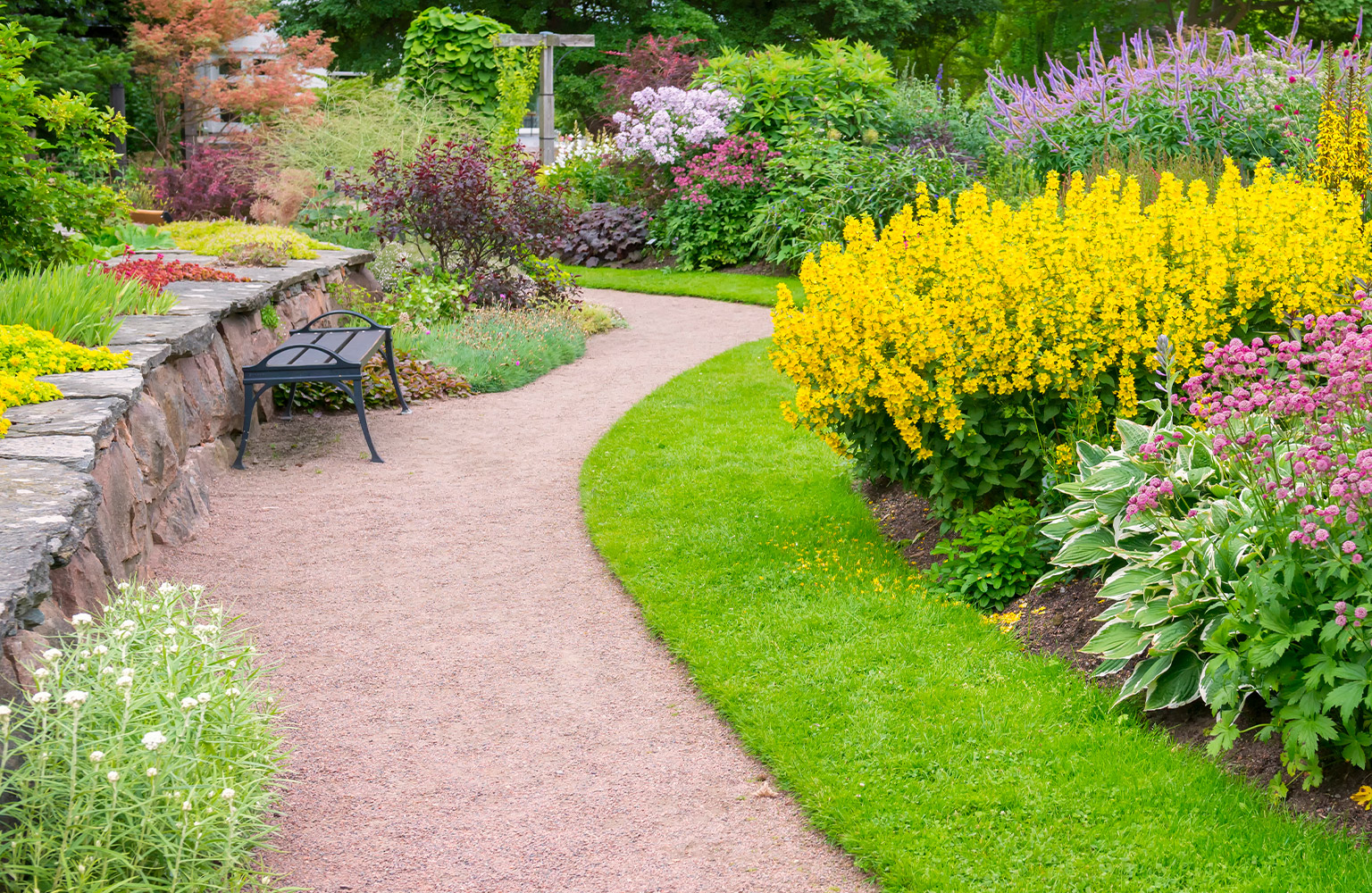
Discover the average sand delivery cost, key price factors, and tips to save on your next project. Get transparent, up-to-date estimates for sand delivery.
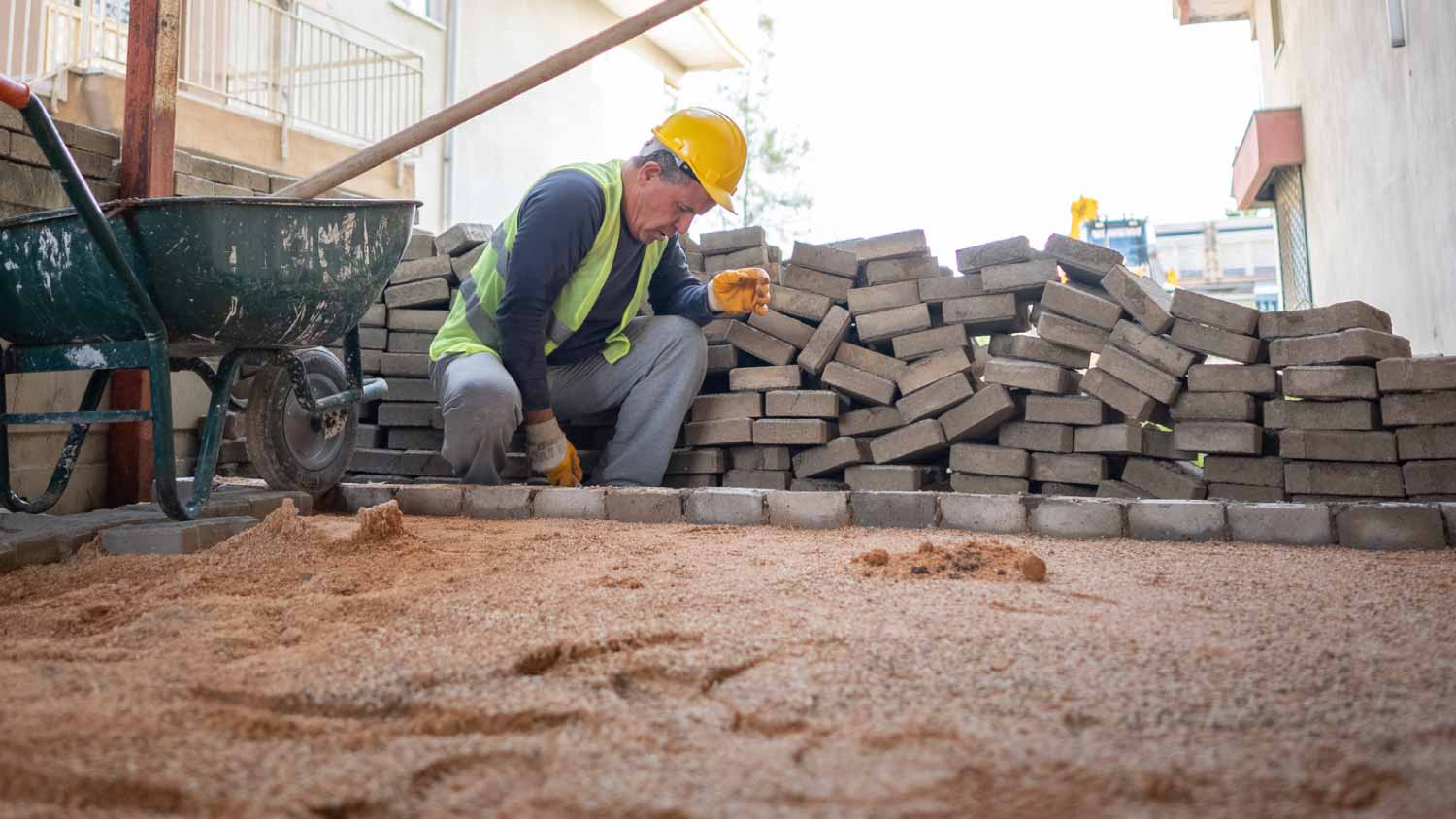
This calculator will help you estimate how much sand you’ll need to complete your hardscape project.

What’s the debate between wood chips vs. mulch? Wood chips are pieces or shredded wood from the interior of a tree trunk, while mulch can be made from a variety of materials.

Tired of your traditional, woody mulch and ready to try something new? We got you! Get 11 mulch alternatives to choose from here.